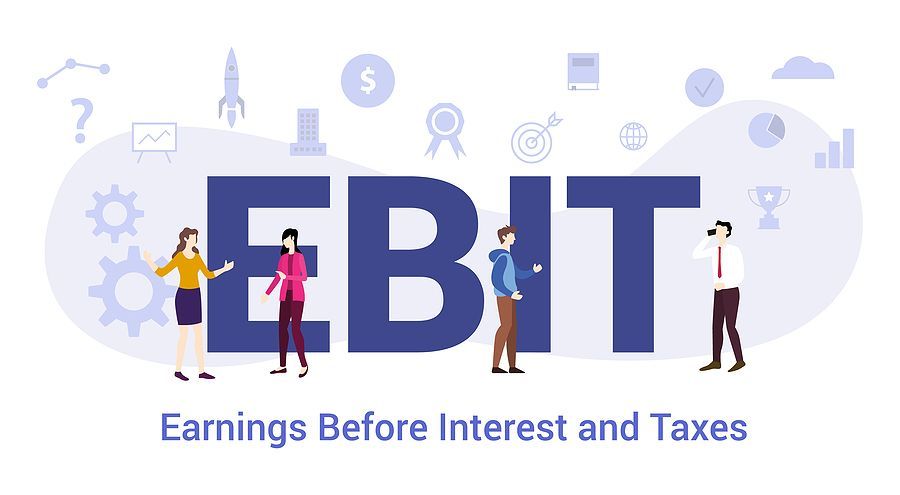News Articles
When the time comes to sell your business, one of the most crucial financial metrics you’ll encounter is EBIT, or Earnings Before Interest and Taxes. Understanding EBIT is essential for evaluating the profitability of your business and, ultimately, determining its market value. This guide will help you comprehend what EBIT is, why it's important, how it's calculated, and how it can affect the sale of your business. We’ll also explore some examples to illustrate its impact and highlight how Brentnalls SA can assist you in navigating the complexities of selling your business.
What is EBIT?
EBIT is a measure of a company’s profitability that excludes interest expenses and income tax expenses. EBIT provides a clear view of a business’s operational performance by focusing solely on income generated from regular business operations.
In simple terms, EBIT is the profit a company makes from its core activities before considering the costs associated with borrowing (interest) and government obligations (taxes). This makes it an important metric for potential buyers, as it shows the underlying profitability of the business without the influence of financing or tax structures.
Why is EBIT important when selling your business?
When selling your business, EBIT is a critical factor in determining its value. Buyers are often interested in EBIT because it gives them a clear picture of how much profit the business is generating from its day-to-day operations. This helps them assess the business’s ability to continue generating profits under their ownership, regardless of how the business is financed or how tax laws might change.
Here are a few reasons why EBIT is particularly important:
- Standardisation: EBIT provides a standardised measure of profitability that can be used to compare businesses in the same industry, regardless of their capital structure. This allows potential buyers to make apples-to-apples comparisons.
- Operational focus: By excluding interest and taxes, EBIT focuses purely on the business’s operational performance. This is particularly useful for buyers who are interested in understanding the core profitability of the business, rather than how it is financed.
- Valuation: EBIT is often used in valuation methods such as the EBIT multiple. This involves multiplying the EBIT by a specific number (the multiple) to estimate the value of the business. The multiple is usually determined by factors such as industry norms, market conditions, and the business’s growth potential.
- Negotiation:
A strong EBIT can be a powerful tool during negotiations. If your business has a high EBIT, it indicates that it is highly profitable from its operations, which can justify a higher asking price.
How is EBIT calculated?
Calculating EBIT is straightforward. You start with the business’s revenue, subtract the cost of sales (COS), and then subtract operating expenses. The formula looks like this:
{EBIT} = {Revenue} - {COS} - {Operating Expenses}
Let’s break this down with an example.
Example: Calculating EBIT
Imagine you own a retail business with the following financials:
- Revenue: $2,000,000
- Cost of sales (COS): $1,200,000
- Operating Expenses (including rent, salaries, utilities, etc.): $500,000
Using the EBIT formula:
{EBIT} = $2,000,000 - $1,200,000 - $500,000 = $300,000
In this example, your EBIT is $300,000. This means that your business generates $300,000 in profit from its core operations before accounting for interest and taxes.

EBIT in business valuation
As mentioned earlier, EBIT plays a significant role in business valuation. One common method is the EBIT multiple approach, which estimates the value of a business by applying an industry-specific multiple to its EBIT.
Example: EBIT multiple valuation
Let’s continue with our previous example, where your business has an EBIT of $300,000. If the industry standard multiple for businesses like yours is 4x, the estimated value of your business would be:
{Business Value} = {EBIT} x {Multiple} = $300,000 x 4 = $1,200,000
This $1.2 million could be the total value of a business or just its goodwill. If it is merely goodwill, the businesses other assets and liabilities will need to be added and subtracted to this to get its total value. Multiples can vary significantly based on factors such as the industry the business is in, percentage of recurring revenue, the business’s growth prospects, and the overall economic environment.
Factors affecting EBIT and business value
Several factors can influence your EBIT and, consequently, the value of your business. Understanding these factors can help you optimise your EBIT before selling your business:
- Revenue growth: Increasing your revenue through strategies such as expanding your customer base or launching new services can boost your EBIT.
- Cost control: Efficiently managing your operating expenses and reducing unnecessary costs can directly impact your EBIT.
- Operational efficiency: Streamlining operations, improving productivity, and adopting new technologies can enhance your business’s profitability.
- Market conditions: External factors such as changes in industry trends, competition, and economic conditions can affect your EBIT and the multiple applied during valuation.
- Capital structure: While EBIT excludes interest expenses, the way your business is financed can still impact a buyer’s perception of risk and, therefore, the multiple they are willing to apply.
How Brentnalls SA can help?
Selling a business is a complex process that requires a thorough understanding of financial metrics like EBIT. Brentnalls SA has extensive experience in helping business owners navigate the intricacies of selling their business. Our team can assist you with:
- Financial analysis: We can help you calculate and analyse your EBIT, providing insights into your business’s operational performance.
- Valuation: Our experts can assist in valuing your business using EBIT multiples and other relevant methods.
- Strategic advice: We offer strategic advice on how to improve your EBIT and overall business value before entering the market.
- Negotiation support: We provide support during negotiations to ensure you achieve the best possible outcome.

Finally
Understanding EBIT is paramount when selling your business, as it provides a clear picture of your operational profitability and plays a significant role in business valuation. By focusing on EBIT, you can better position your business for sale and negotiate a favourable price. Whether you need help calculating, improving your profitability, or navigating the sale process, Brentnalls SA is here to assist you every step of the way.
With Brentnalls SA by your side, you can approach the sale of your business with confidence, knowing that you have a team of professionals working to maximise your return.
Discuss Further?
If you would like to discuss, please get in touch.
Disclaimer
The information provided in this article does not constitute advice. The information is of a general nature only and does not take into account your individual financial situation. It should not be used, relied upon, or treated as a substitute for specific professional advice. We recommend that you contact Brentnalls SA before making any decision to discuss your particular requirements or circumstances.








